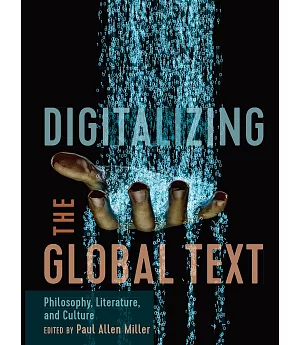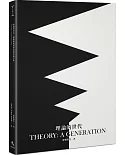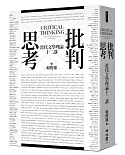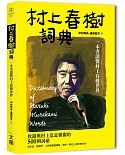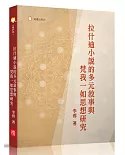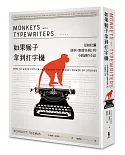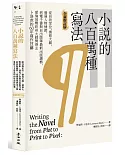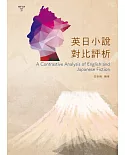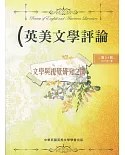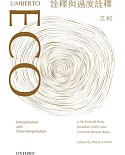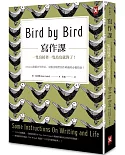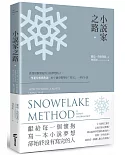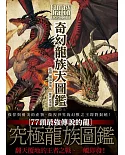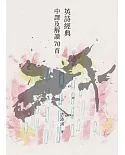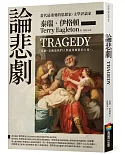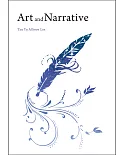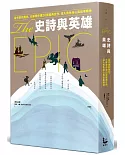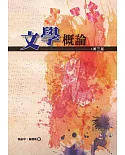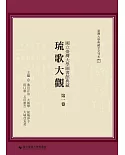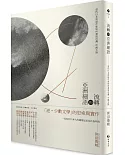Introduction (excerpt)
by Paul Allen Miller
The essays are divided into three categories. The first group, “The Local and the Global in the Digital Age,” is the most general. It looks at the intersection between the possibilities
opened by digital technologies for a wide dissemination of cultural artifacts and the ways in which those very technologies undermine the local characteristics that give those artifacts the
power to resist a relentlessly homogenizing capitalist order. The second group, “Going Global: Digital Popular Culture,” offers a more in-depth look at two digital pop culture phenomena, K-pop
and interactive narrative structures in video games and beyond. Thus where the first section offers an overview of global culture in the digital age, examining the concepts of the digital and
its resistance, international literary trends, the global phenomenon that was the two-hundredth anniversary of Richard Wagner’s birth, and the international epistolary novel in the age of
email, the second focuses much more on two specific digital phenomena of global significance: music vid- eos and gaming systems. The final section, “The Global Object World: Literature and
Ontology in Late Capitalism,” looks from three separate perspectives at what Foucault would label the ontology of the present. It asks how we got here and what is the nature of our being in the
commodified world of global capital.
I lead off the collection with an essay on strategies of resistance. My essay, “On Being Old and Queer: Plato’s Seventh Letter in the Digital Age, or Resisting Neoliberalism,” argues that the
forces that push toward digitalization are the same as those that push for global commodification. After a more general introduction to the topic, the essay begins with a brief reading of
chapter 1 of volume 1 of Marx’s Capital on the origins of the commodity and the money form and then moves on to the work of Foucault and Plato’s Seventh Letter. The essay’s title alludes to
Foucault’s late lectures and to the status of the ancient world and its artifacts as objects whose value stubbornly resists being consumed by the reign- ing neoliberal calculus. In the last
years of his life, Foucault focused intensely on Plato’s Seventh Letter. There, Plato argues that no serious philosopher commits his thoughts to writing but rather relies on direct
interpersonal dialogue and the insight those intense, emotionally charged conversations produce. Many today view Plato’s argument as ironic or reactionary. How could writing’s power to
reproduce itself identically, regardless of context, be opposed by the advocate of universal ideality? Foucault contends that Plato’s point is not to oppose writing per se—the ancient world’s
incipient digitality—so much as it is to favor tribe, the labor of the self on the self, literally the “rubbing” or “friction” between teacher and student that produces the spark of
enlightenment, a moment of unrepeatable intelligibility. In the end what is most authentic is not the normative and the infi- nitely reproducible, which functions like the money form of
exchange value, but the moment of irreducible insight, of queer intelligibility, which makes possible a form of self-relation and of relation to others that is based on curiosity and care. This
insight must be informed by data and may be cosmopolitan in its scope but is never reducible to information or mere exchange, nor is it able to be globalized in its imperial reach.
This dialectic of the irreducibly local and the truly global in turn features centrally in Alexander Beecroft’s “Local Cultures, Global Audiences: The Dream (and Nightmare) of the World
Novel.” Beecroft argues that global literary culture in the early twenty-first century seems caught in a dilemma analogous to that of early twenty-first-century politics. We are poised between
two understandings of globalization. While vast impersonal forces propel us toward a globalized economy and culture, in culture as well as in politics, he notes, we argue bitterly over the
desirability of a planetary culture. Global trade and social media can knit together widely scattered groups, expanding the reach of even the most restrictedliterary languages. Nonetheless,
there seems to be a real danger that the power of a globalized market, will transform the cultural world from a series of interconnected national and regional cultural dialects and idiolects
into a vast planetary lingua franca, in which active readers morph into cultural consumers, passively absorbing nearly-identical products, produced wherever costs are lowest. Books and blue
jeans a like flow from producer to consumer through the global supply chain. In recent years, we have seen the rise of both a right and left populist resistance to globalization: a movement to
fight back against the homogenization of global culture.
Nonetheless, Beecroft contends, the globalization of literary culture need not produce blandness and uniformity. New technology in principle makes publication easier and cheaper, making it
possible for less commonly spoken languages to acquire written literatures and for nascent and threatened literary languages to thrive. The lower costs of digital publication make literatures
in languages such as Slovak, Albanian, and Kurdish, financially viable. As it becomes possible to package texts as commodities for global consumers, it should also become easier to find and
reach niche markets, whether linguistic minorities or countercultural and counterhegemonic groups, and this very market segmentation could present fresh opportunities for more sophisticated
cultural engagements with globalization.
Beecroft’s essay begins by examining recent arguments about a possible global literary culture. Reading the works of two recent writers, both Italian, he suggests that there is reason for
optimism: while the pressures toward uniformity are real, globalization may yet leave room for a complex, multivoiced cultural dialogue. In fact the authors discussed offer signs of the
emergence of a new grammar of the global novel, of the gradual emergence of a series of tropes that are adapted to the needs of global narration in our era, and play much the same role as
epistolary fiction did in the eighteenth century with the emergence of the nation-state.
It is precisely the emergence of a new global and electronic epistolary fiction that forms the basis for our third essay, Bennett Fu’s “Global Public, Digital Public: Neo-epistolarity and
Tactical Consumption in À toi.” Picking up where Beecroft leaves off, Fu’s essay analyzes Vietnamese Franco-Canadian writer Kim Thúy and Slovak Swiss novelist Pascal Janovjak’s coauthored
epistolary text À toi (To You, 2011), which is structured as a series of emails written between October and December 2010. These often-short messages exchanged between a wide range of
geographical locations—Montreal, Hanoi, Ramallah, and Dhaka—discuss their multilingual, multicultural writers’ often ambivalent relationships with language, identity, and writing. Through a
series of emails exchanged about quotidian trivia, the writers share the story of their various cultural exclusions and their experiences of displacement. She is a French-speaking Canadian
novelist of Vietnamese heritage, and he is a son of mixed French and Slovak parentage who, though born in Switzerland, grew up and worked in Lebanon, Jordan, and Bangladesh. The resulting work
can only be termed global literature, but it is also irreducibly local in its evocation of a series of discrete cultural and geographical locations.
À toi exemplifies what Fu terms “neo-epistolarity.” In the world of letters, as in the world of goods, neo-epistolarity creates a virtual space of community and solidarity across boundaries.
Fu argues that these “virtual” epistles serve to create a new digital instantiation of the Habermassian public sphere, a space where individuals can come together freely and discuss individual
and social problems.These writers’ collaborative work, Fu contends, also cements certain correlations between epistolarity and Certeauean consumption/production as a tactic of resistance.
Writing becomes a form of agency that liberates Thúy from the constraints of life as an Asian woman and as a foreigner, while the shifting global perspective allows her and her coauthor to
create new cultural vistas that become public through this virtual epistolary form.
We end this first section on a relatively more hopeful note with Nicholas Vazsonyi’s examination of the worldwide celebration of the two-hundredth anniversary of Richard Wagner’s birth. In
“Wagner in China: Negotiating the National, the Universal and the Global,” Vazsonyi investigates what the relationship is between music and our concept of home, particularly our spiritual home.
He asks, if our home is displaced or lost or we are exiled from it, can music return it to us, bring it back through powers of recollection, or at least provoke in us that most Odyssean of
emotions, nostalgia, the pain that comes from longing for nostos (return)? It is the case that music is often the most evocative of the arts in terms of memories. Certain songs are associated
with certain experiences; a given melody or even but a few notes can conjure up an entire emotional world. But Vazsonyi demonstrates that this return can take many forms and can happen in many
different places. There is something unheimlich about our musical home, which allows us to experience it even when we are far away—listening to Wagner in Shanghai, Peking opera in Berlin, or
Beethoven’s “Ode to Joy” in Taipei, New York, or Johannesburg.
In many ways music is also the most global of the arts. It is not limited by language, and whether we are discussing popular or classical music, it often spreads around the globe literally at
the speed of light. But is the global appeal of the music of a composer such as Wagner, whose birth was celebrated around the world, the same as a universal appeal? That is to say, even as
people from widely different backgrounds and widely different cultures may thrill to the opening bars of “Ride of the Valkyries,” do they have the same experience, and if not, then in what
sense can they be said to be experiencing the same object? Moreover if different people are having different experiences and, in not insignificant ways, perceiving fundamentally different
objects, then in what meaningful way can that object be spoken of as a universal, even if it is indisputably a global, phenomenon? The paradox becomes all the sharper when we are dealing with a
composer such as Wagner, who is so deeply and problematically associated with German nationalism and with the harsh peculiarities of German history and culture.
As we noted above, the paradoxes of the local, the global, and the universal are not simply limited to the artifacts of high culture: novels, philosophy, opera, and the like. Popular music
and culture participate in this same overdetermined dialectic. If opera is the Gesamtkunstwerk of high culture, the music video is arguably the “complete art work” of the popular realm,
combining music, poetry, visual art, and dance. Julie Choi in “Right to the City: The Metropolis and ‘Gangnam Style’” offers a close reading of this international pop sensation to open the
second section of the book. First uploaded on July 15, 2012, “Gangnam Style” was the first video ever to reach one billion views. The content, style, and history of the video, Choi argues,
speak both to its utopian credentials as well as to its cynicism. It is a call to arms for the urban dispossessed to take back the topography of Gangnam and at the same time a celebration of
the excesses of glamorous consumption.
The psychedelic spectacle that calls itself “Gangnam Style” presents a rich and colorful array of metropolitan experience that is starkly distinguished from the monotony of the rational
workday. Daily life is transposed into leisure, and festivity becomes possible in city spaces planned and developed for capitalist production. In the tradition of the modernist flaneur, Psy
narrates the city from the perspective of the scavenger making his way through the glorious detritus of contemporary commodity culture. What “Gangnam Style” manages to do, Choi argues, despite
all the odds and perhaps despite the intention of the artist himself, is to upend the inhumane coordinates of the postmodern city.
We continue our examination of global popular-culture forms with Mou-Lan Wong’s “The Garden of Living Paths: Interactive Narratives in Global Geek Culture.” Wong begins with a reading of
Jorge Luis Borges’s famous story “The Garden of Forking Paths,” in which we learn of Ts’ui Pên’s novel of the same name. This Chinese narrative, we are told, has baffled readers for many
generations with its multiple, chaotic, and often contradictory plot lines. In the course of a seemingly unrelated series of events taking place in Britain during the First World War, Borges
tells us how a descendant of Ts’ui Pên comes to understand that The Garden of Forking Paths is not what it has long seemed, an inchoate mess, but actually a book that attempts to narrate all
the possible outcomes of the protagonist’s decisions in life without at the same time including a specific registry or index in the manner of, for example, Julio Cortázar’s Hopscotch. Thus
every seemingly contradictory plot twist is in fact simply another branch in this refractory narrative as all possible options are continuously charted, creating both new narrative trajectories
and at the same time looping back and intersecting with previously articulated parallel plot developments. Upon coming to this realization, Yu Tsun, Ts’ui Pên’s descendant, comprehends that The
Garden is neither unintelligible nor a monumental failure but is an innovative experimental model for nonlinear temporality. In The Garden time seems forever to branch outward to create new
possible futures.
Wong observes that in many ways what Borges’s story imagines in 1941, in its own admittedly limited and linear way, is what digital technology would later make possible as hypertext. Although
scholars such as Noah Wardrip-Fruin and Lev Manovich, in their New Media Reader, and Perla Sassón-Henry, in her Borges 2.0, have used Borges as a starting place for their examinations of the
various points of contact and intersection between literature, science, and a variety of digital narratives, hyperfictions such as Michael Joyce’s Afternoon: A Story have not generally been the
object of serious academic examination. Moreover, even as hypertext has now been combined and incorporated into multimedia experiences, particularly in video games and other formats, little
research has been done on the relation between Borges and these new media. Wong’s essay surveys printed and digital interactive narratives from choose-your-own-adventure books to video games.
It explores the idea of experiencing multiple timelines through the looping effect of rereading branching narratives and charts how Borges’s original concept has become a conceit of global
digital culture.
In our final section, we shift from the dialectics of the local and the global, the popular and the high, in contemporary digital culture to questions of ontology in the world of globalism
and late capital. While a “return” to ontology has recently come to the fore in the work of thinkers such as Quentin Meillassoux, with his argument for a post-Kantian materialism, and in that
of the advocates of object-oriented ontology, in fact the ontological has never really left us. Despite Meillassoux’s attacks on the “correlationism” of philosophers such as Derrida and
Foucault (Zalloua chap.5), few thinkers operating in the wake of Heidegger have truly left the ontological question behind. Sartre sought a phenomenological ontology of freedom. Foucault argued
for an ontology of the present, and Derrida sought to deconstruct the closure of Western metaphysics, an occlusion that necessarily opened onto a new way of being.
Meili Steele opens his essay, “The Ontological Turn: A New Problematic for Literature and Globalization,” by invoking not the object-oriented ontology of Graham Harman but that of older
traditions: the Heideggerian work of Charles Taylor and the post-Foucauldian work of Talal Asad. Taylor, as Steele observes, makes a strong argument for the ontological priority of the social
as the enveloping context that makes possible both subjective judgment and the objects that subjects seek to define. He argues for an articulation of our social embedding that is deeper and
more determining than the concept of ideology found in thinkers such as Said, and this is something, Steele contends, that Taylor shares with those like Asad who work in a more Foucauldian
line. But where Taylor often looks at the social whole as determining our possibilities of meaning, Asad, following more closely Foucault, examines specific structures of power and
domination.He focuses particularly on the ways in which Western notions of secularism maintain Christian structures of thought, which become increasingly oppressive in a global context,
especially when portrayed not as a set of culturally specific norms but as a form of pure, objective neutrality. Moreover, as Steele observes, when non-westerners examine French or American
secularity (or feel themselves examined by it), they often do not see what from an internal perspective is understood as the slow historical development of fair solutions to conflicts about
morality, politics, and religion. Rather they perceive a kind of externally imposed, abstract morality that both defines a space of judgement and within that space sets itself up as the
arbitrator of all forms of both religion and irreligiosity, treating them as sets of objects to be measured, judged, and corrected by a disembodied and omniscient reason. Secularism, in such
cases, may be less the antidote to fundamentalism than a contributing cause.
The ontological approach, Steele thus argues, offers us a variety of possibilities for understanding the nature of conflicts. It can open up temporality so that we can see how conflicts
emerge historically over long periods. It can also give us access to the wide range of structures that make up the collective mind that we study. We are not limited to the study of ideas and
beliefs present to the minds of historical actors, for those ideas and beliefs can be formed only against the background imaginaries that constitute their horizon of understanding. Steele
closes by arguing that literary discourse is particularly adept at exploring different dimensions of these background imaginaries—the way they set up worlds, languages, characters, views of
causality and consciousness, and the like. The ontological approach, as he argues, is less a return to a precritical encounter with things in their ontological purity than an understanding of
how we constitute and are constituted by an object world that both exceeds our grasp and determines our being.
Steele’s emphasis on the ways in which literature both gives access to the ontological realm and helps us imagine being otherwise offers a peculiarly apt introduction to Chi-she Li’s “Altered
Realism in Ontological Fiction: Never Let Me Go and Point Omega.” Li’s argument in this essay is twofold: that we are currently living through a fundamental shift in our understanding of
ontology and that we can trace that shift in the evolution of the realist novel. Starting from the grounding assumptions of object-oriented ontology that humans’ experience of the world cannot
be privileged, Li returns to the Bakhtinian notion of dialogue as the privileged moment in the constitution of the realist novel. This move may seem paradoxical at first, since we are so
accustomed to an anthropocentric privileging of human consciousness in our understanding of voice and dialogue. But in the digital world of robotics and of the Internet of things, this may no
longer be the case. Artificial intelligence has made the line between human and nonhuman increasingly hard to defend, as have various advances in medicine and biomechanical engineering. When
does an artificially created being cross the threshold to humanity? When can we engage it genuine dialogue? If we can have meaningful, even if nonverbal, exchange with nonhuman actors, how does
that fundamentally reconfigure our understanding of the origins, nature, and limitations of human consciousness?
These are the questions, Li argues, posed by Kazuo Ishiguro’s Never Let Me Go (2005), which portrays a British boarding school that we slowly learn is populated with clones produced for organ
harvesting, and Don DeLillo’s Point Omega (2010), which centers on documentary filmmaker Jim Finley’s journey to the desert. In each case objects that are in no sense considered conventionally
human become actors and agents within the narrative, dialogically interacting with the other characters. The enveloping context that makes possible both the subjective judgments of the human
actors and the objects those subjects seek to define is shown to be radically undifferentiated or at least not defined by the difference between the human and the nonhuman, between subjects and
objects. Thus the ontological assumptions of the great conventions of nineteenth-century realism, which are humanist to their core, are upended by these novels and used to portray a brave new
world in which humans not only manufacture their environment but also are equally manufactured by it.
The world of commodity capitalism is that from which both globalism and the digital sprang. As I argue in the first essay, the notion of global culture and the possibility of its reduction to
a digital flow of ones and zeros is predicated on a dominance of exchange value over use value that defines the birth of the commodity. By recovering forms of thought and experience in the work
of writers as various as Plato and Foucault, I contend, we gain access to a lifeworld that resists commodification, in much the same manner that the works examined by Beecroft remain stubbornly
tied to the particularities of local experience, even as they appeal to a transnational literary market. Throughout this volume we examine extensions and variations on these basic insights and
look at the ways in which culture and the imaginary posit forms of resistance to the homogenizing forces of global capital: from Fu’s reinvention of the public sphere in a neo-epistolary novel
that gives voice to the diasporic and the marginalized; to Vazsonyi’s reconceptualizing of what it means to be “at home” through the power of music; to Psy’s carnivalization of the serious
world of economic production by means of parody and dance in “Gangnam Style”; and to the liberating displacement of human consciousness via the representation of complex and multilineart
emporalities inspired by Borges. We arrive finally at Steele’s and Li’s undermining of the ontological privilege of the individual human consciousness posited by rationalist philosophy and
classical as well as neoliberal economics.
With our final essay, we go back to the point or origin of both classic realism and the ontological dominance of the commodity form in modern thought. Hisup Shin’s “Ghost in the Machine:
Fetishism and the Laboring Body in Marx, Dickens, and Mayhew” returns us to the scene of the crime. Shin’s aim in the essay is to explore the theory of fetishism as a site of conflicting
discourses traversing a variety of intellectual and social fields from anthropology to the economy at a time when England was becoming increasingly materialist in its modern outlook. Originally
coined to designate a specific type of material experience that is deemed unscientific and primitive, the term fetishism gained further significance when Marx adopted it in order to capture
dehumanizing patterns of materialistic life under capitalism. Commodity fetishism more precisely refers to the process whereby commodities seem to take on a life of their own, in which produced
objects become agents by concealing the labor that produced them, the history that made them possible. Shin argues that while Marx’s use of the term is primarily critical in diagnosing the way
in which individuals (laborers) are compelled to adopt thing-like attributes in their participation in the commodity market, it also offers an alternative insight into the very same features of
dehumanization, a fetishist insight extending beyond the Marxist frame of critical thinking. In particular this essay argues that this insight organizes a unique bodily figuration assigned to
physical labor—a bodily type whose theoretical and historical significance becomes discernible in its intervention in the way in which the nineteenth-century discourse of political economy
reproduces “a recognizably Victorian disgust for the body.” Thus the object-oriented ontologies of the twenty-first century are revealed to be dependent on the commodity form as the fundamental
definition of being in our late capitalist world, and it is precisely the abstraction that commodity production designates in its privileging of exchange over use value that makes possible a
world market in which Dickens is as much a commodity in Korea as K-pop is in California, in which goods and services float free from their specific cultural contexts and all that is solid melts
into air.

